Ancient Psychedelia: Alien Gods & Mushroom Goddesses
Online Book - Chapter 7, Page 98
Back to Online Book Mainpage / Next Page (Chapter 7, Page 99)
The wheel originates of course in India, where the Temple of the Sun in Konark, c. 1250 AD, shows the wheel all by itself (18d), and a relief from Madhya Pradesh, India features the wheel as well (28d). When I mention the idea that the idea of the wheel itself came from the inspiration of the mushroom shape, some people laugh at first. But it makes more sense when you see a terracotta of a bull-drawn cart from the Han Dynasty, c. 206 BC to 220 AD, with a long, protruding axle (29a). Clues can be found all over the place and as a wise sage often said, “once in a while you can get shown the light, in the strangest of places, if you look at it right.”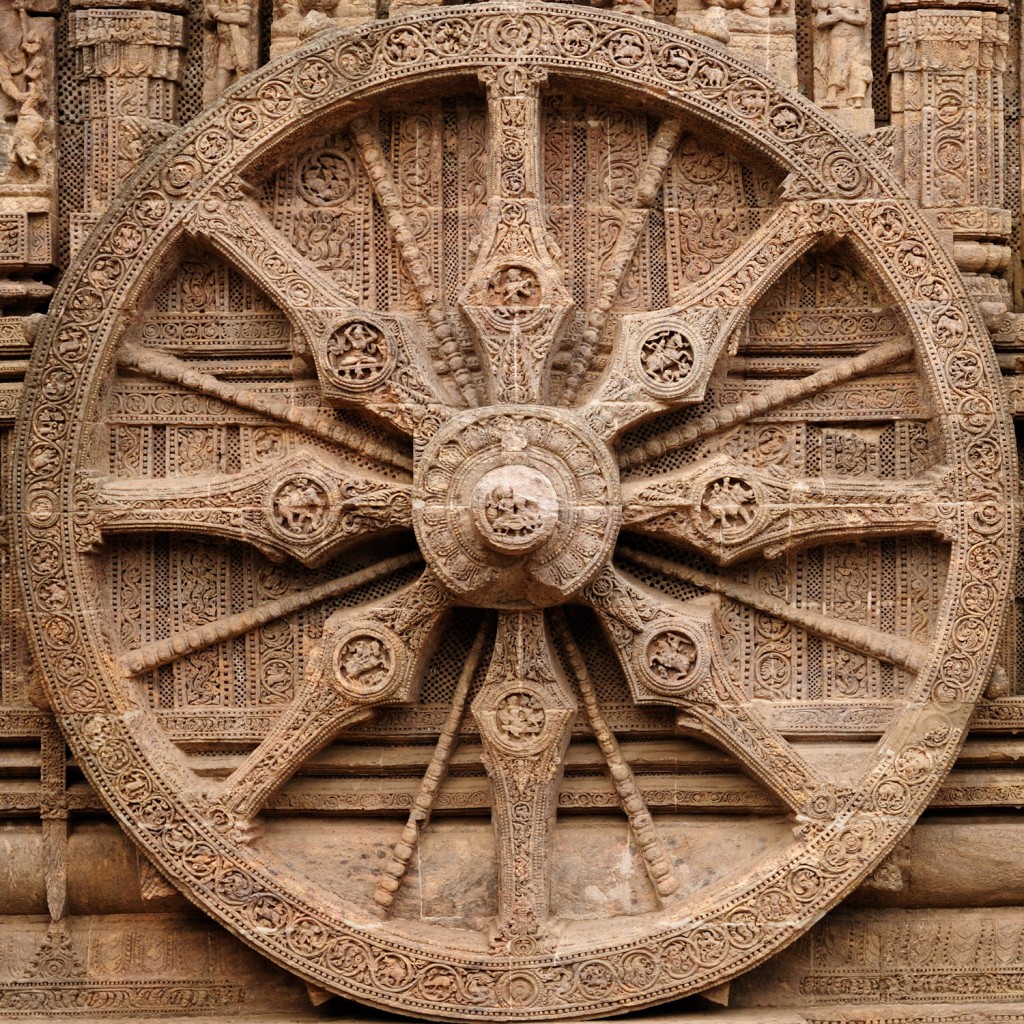 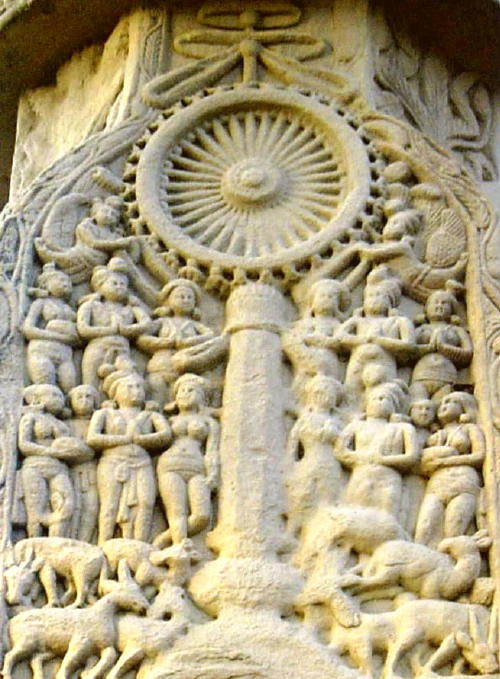 R: (28d) Sanchi stupa Madhya Pradesh, India 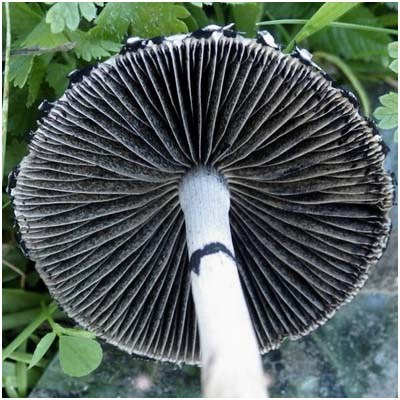 Mushroom Underside Gills / Cap 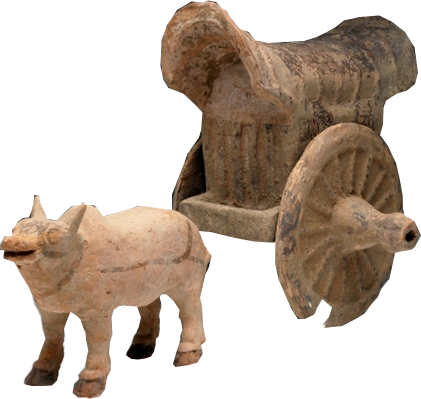 (29a) Han Dynasty, ca. 206 BCE to 220 AD |
In Chinese and Asian Buddhism, the ruyi is a ceremonial scepter or talisman which has a round disc at the top and a staff, which is supposed to impart power and good fortune. The Ruyi is one in a long list of “substitute” items, like the parasol or chatra umbrella, which has no place for its use in history but serves as an occult analogy for the mushroom. Very similar to the shepherd’s staff, originally, a sickle for harvesting the mushroom, later became associated with sheep, likely due to the wool filter connection, and even later, the crozier, used by popes (97c).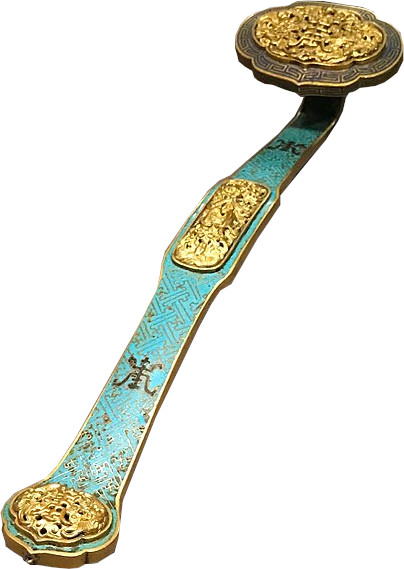 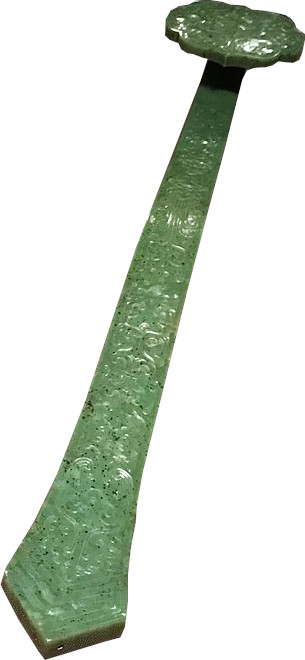 (97c) Pair of ruyi scepters. Left: China, 18th century Qianlong period, 1736–1795, Qing dynasty Another scepter of the Buddhist tradition which traces its origin back to India is the trident, called the trishula. This is also the scepter of Neptune, many are familiar with. The trishula has three spear points. It’s one of the symbols held by Shiva. Ganesh and Durga are also known to carry it. This is simply another version of Indra’s vajra or “thunderbolt.” Kushan era coins c. 200-225 AD, depict Vasudeva I holding a trishula, while the reverse depicts Shiva holding one also, while standing next to his bull Nandi. Notice Shiva has a crescent above his head and the imagery of a mushroom cap from behind and surrounding his head like a halo (20e). 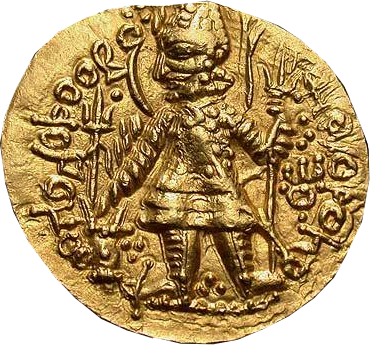 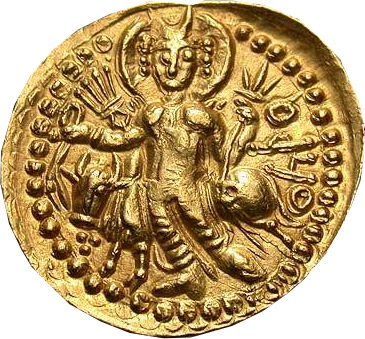 (20e) Vasudeva I, Two-armed Shiva standing facing, holding trident and diadem, Bull Nandi left behind c. 200-225 AD |
Go Back to Page 97